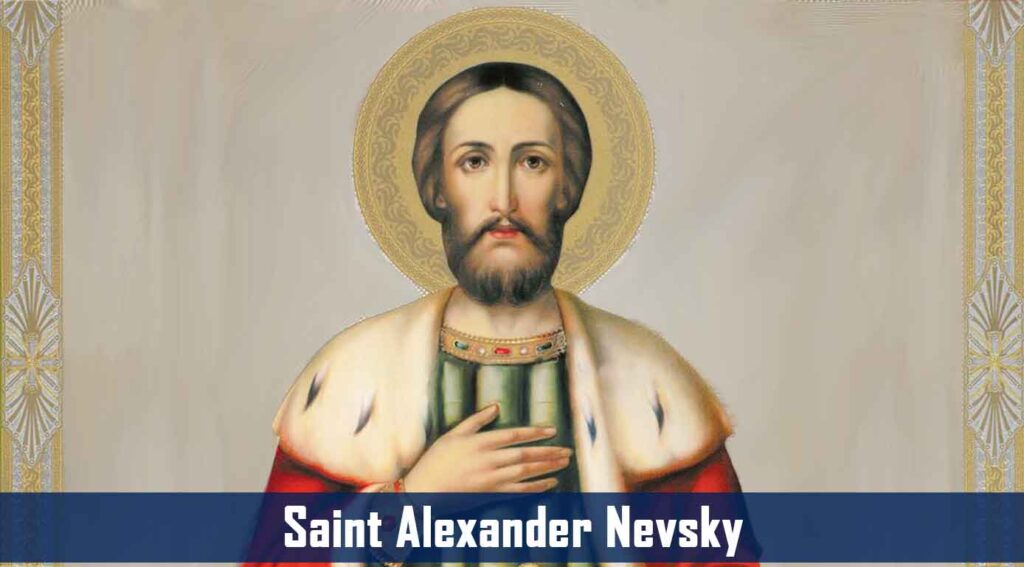Blessed Maria Angela Astorch
Blessed Maria Angela Astorch Read More »
Blessed Maria Angela Astorch was a Spanish religious figure. She was born on September 1, 1952 in Barcelona. She was the youngest in her family.
At a young age, she already started pursuing her vocation. She entered the Capuchin Poor Clare monastery as an aspirant, in 1603. Five years after, 1608, she began her journey as a novitiate.
Years after, she became a novice master and founded a monastery in Zaragoza. In 1624, she became vicar and later on, an abbess. She founded another monastery, along with other sisters, in Murcia in 1945.
Blessed Maria Angela Astorch remained an abbess until 1661. She died four years after, 1665, at the age of 75.
Blessed Maria Angela Astorch Read More »
Saint Edmund Campion was born on January 25, 1540. He was an English Jesuit priest and was martyred during the reign of Queen Elizabeth I.
He was the son of a bookseller. He received his early education at Christ’s Hospital school. He was then sponsored by a governor of the school as a scholar at St. John’s College in Oxford. Two years later, he was chosen to lead a public debate with the Queen as an audience. He won the regard of the Queen and the patronage of other important people.
He was initially a deacon in the Anglican church, however, he realized later on that his heart lies with the Roman Catholicism. He then entered the Cathollic Church in Northern France. In 1573, he became a member of the Society of Jesus in Rome.
He was arrested in 1581. They tortured him so that he will renounce his faith. When he refused, they charged him with treason and execution.
Saint Edmund Campion Read More »
Saint Andrew the Apostle, as his title suggests, was one of the apostles of Jesus Christ. His brother, Simon Peter – most known as St. Peter– was also a disciple. The brothers were fishing when Jesus approached them and asked them to become his disciples.
Saint Andrew was mentioned multiple times in the Gospels. There was an account that he was the one who informed Jesus Christ about boy with the loaves and fishes. He was also present at the last supper.
He was martyred through crucifixion in Patras. Based on the Acts of Andrew, he was bound to the cross instead of being nailed to it. And the cross was in an X-shape (“saltire”) as per St. Andrew’s request. It is believed that he was unworthy to be crucified the same way as Jesus’ cross.
He is the patron saint of Scotland and Russia.
Saint Andrew the Apostle Read More »
Saint Brendan of Birr, also known as St. Brendan the Elder, was one of the 12 Apostles of Ireland. He was one of the early Irish monastic saints and was considered as one of the chief prophets of Ireland.
He studied at the monastic school at Clonard Abbey under St. Finian. He became a monk and later on founded a monastery, where he served as the abbot. He was known for his sanctity and spirituality.
He also attended the synod of Meltown wherein he helped defend St. Columba during the trial. Due to his assistance, St. Columba received a more lenient sentence. They eventually developed a friendship which led to the connections between Birr and the Columban foundations.
Saint Brendan of Birr Read More »
Saint Catherine Laboure was born on May 2, 1806. When she was 9 years old, her mother passed away and she was left with the responsibility of caring for their household. She was the ninth out of 11 children.
Saint Catherine has always been extremely devout. She eventually became a member of St. Vincent’s order. Then later on entered the Daughters of Charity.
She was visited by the Blessed Mother more than once regarding her mission. The second time the Blessed Mother visited her, an image was shown to her which she was ordered to show to the father confessor. When this was told to the Archbishop, he immediately ordered 2,000 medals to be made with this image.
Saint Catherine passed away at the age of 70. Her body was found to be incorrupt. She was later on beatified by Pope Pius XI in 1933 and canonized on 1947. She is the patron saint of the elderly, infirmed people and the Miraculous Medal.
Saint Catherine Labouré Read More »
Little is known about the life of Saint James Intercisus. There’s not much account of how he lived, the date of his birth was even unknown. All that is known is that he was born in Persia.
Saint James Intercisus acted as a military officer as well as adviser to King Yazdegerd I during a time wherein Christians were being persecuted by the said king. It was said that he renounced his faith to survive while he was working for the king. However, during the reign of the king that succeeded Yazdegerd I, St. James Intercisus confessed his Christian faith.
Saint James Intercisus was sentenced to death due to this. He died a slow and painful by being cut up to pieces, which actually translates to his name “Intercisus”.
Saint James Intercisus Read More »
Saint John Berchmans was born on March 13, 1599. He is the eldest among five children and their father was a shoemaker.
He wanted to join the Society of Jesus but many people were opposed to this. People, including his father, dissuaded him from pursuing this path. However, in 1616, he still entered the Jesuit novitiate. Two years later, 1618, he was able to make his first vows. In 1621, Berchmans was selected to participate in a discussion at a Greek College. While he was there, he fell ill.
He passed away on August 13, 1621. A large crowd gathered to view his remains for days.
Saint John Berchmans Read More »
Saint Catherine of Alexandria is part of a group of Catholic saints, known as the Fourteen Holy Helpers, who are venerated for their power of intercession.
She was believed to have come from nobility, a princess even. It was believed that she was able to convert hundreds of people. In addition, she protested the persecution of Christians under the rule of emperor Maxentius. She was also a noted scholar who was able to defeat the scholars sent by the emperor to oppose her.
However, at the early age of 18, she was martyred. The well-known Joan of Arc claimed that Saint Catherine was one of the voices that spoke to her and counselled her.
Saint Catherine of Alexandria Read More »
Saint Vicente Liem de la Paz, originally named as Phạm Hiếu Liêm, was a Vietnamese martyr. He was born to Vietnamese parents who were members of nobility.
His name, Vincent, was given to him after he was baptized. He was later brought to a missionary center by his parents to to learn catechism. Later on, he studied in the Philippines under a scholarship. He studied in Letran and finished a degree of lector of humanities. He entered the Dominican order after completing his studies and in 1758, he was ordained as a priest under the Dominican order. In 1759, he went back to his homeland.
He was appointed as a professor in Trung Linh seminary. However, in 1773, he was arrested along with his assistants. It was during this period that Catholics were being persecuted. Saint Vicente Liem de la Paz along another Dominican priest, Jacinto Castañeda, was given a verdict of beheading.
Saint Vicente Liem de la Paz Read More »
Saint Alexander Nevsky, born as Aleksandr Yaroslavich, was the prince of Novgorod and Kiev as well as the grand prince of Vladimir. He was the son of the grand prince of Vladimir and was elected as the prince of Novgorod in 1236. Three years later, 1939, he got married to the daughter of the Prince of Polotsk.
During his reign, he was able to defeat the Swedes, the Lithuanians and the Finnic people. He has also quelled multiple rebellions against Vassily and the Mongols. His good relations with the Golden Horde was said to have been an advantage and protected Russia from ravages.
Saint Alexander Nevsky died in 1263. In 1381, he was elevated to the status of a local saint and was later on canonized in 1547.
Saint Alexander Nevsky Read More »
Add San Jose Filipino Ministry as a new recipient, Send your donation using"[email protected]"
Payable to - San Jose Filipino Ministry
Address - 1235 S Magnolia Ave Anaheim, CA 92804-5115
1235 S.Magnolia Ave. Anaheim, CA 92804-5115
1235 S.Magnolia Ave. Anaheim, CA 92804-5115
Add San Jose Filipino Ministry as a new recipient, Send your donation using"[email protected]"
Payable to - San Jose Filipino Ministry
Address - 1235 S Magnolia Ave
Anaheim, CA 92804-5115
San Jose Filipino Ministry. All rights reserved. 2021 © Powered by Phoenix Virtual Solutions
Sponsored by EverClear Hospice and Palliative Care









